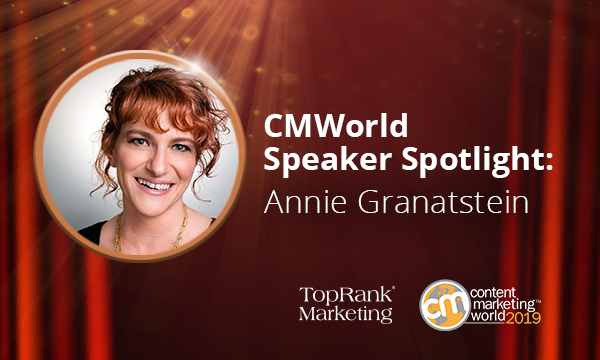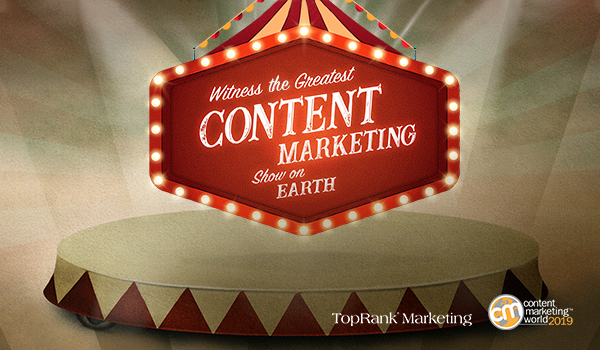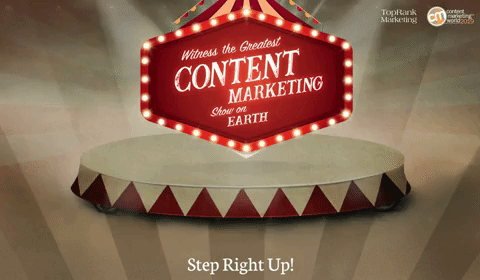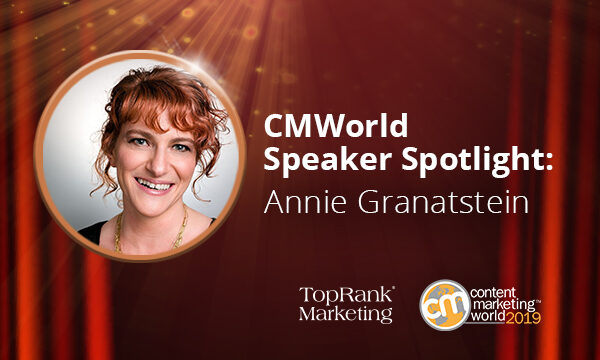
We are all products of our environments, and the experiences we carry are invariably influential to the way we approach and think about our jobs.
Recently we shared an interview with Margaret Magnarelli, who spent nearly a decade as a magazine editor before moving into a content marketing leadership role. With her background in journalism, she offers important perspective for marketers everywhere.
The same is true for Annie Granatstein, who lives at the center of the convergence between investigative journalism and brand marketing. Annie runs The Washington Post’s BrandStudio unit, which takes The Post’s award-winning proclivity for immersive digital storytelling and leverages it on behalf of brands and advertisers.
Peruse BrandStudio’s archive and you’ll find a wide range of multimedia techniques applied to bring stories to life. These include 360-degree environments, photo tours, augmented reality applications, choose-your-own-adventure journeys, and more. With the theme of this year’s Content Marketing World being show-stopping experiences that delight our audiences, the work being done by Annie’s team deserves our full attention.
She was one of the CMWorld speakers who contributed to our interactive conference preview experience, where she proclaims that engaging our audiences emotionally should be an utmost priority.

In her extended interview with TopRank Marketing, Annie elaborates on how BrandStudio is pursuing this objective, with plenty of examples and insights to illustrate.
Annie Granatstein on Immersive, Emotional Content Experiences
1. What do your day-to-day duties as Head of WP BrandStudio entail?
I oversee a multi-disciplinary team of content strategists, writers, editors, interactive designers, developers, program managers, producers, and social media and onsite performance strategists. We work together to conceive, create, and promote branded content programs for Washington Post advertisers that are story-first, data-driven, technology-forward. On any given day I move between pre- and post-sale, and also between high-level management and hands-on creative oversight. So I might spend some time developing business strategy or strategizing team structure and then move to editing an article, giving notes on a video cut, or providing creative direction on proposals.
2. Compelling stories are table stakes for content marketers these days. To stand out, we need to elevate these narratives through more immersive and engaging experiences. How can we all better embrace this central philosophy of BrandStudio?
The key to creating more immersive experiences is collaboration between different types of talent. As a content leader you must find ways to continuously encourage and improve that collaboration. One way we’ve done this is by creating multi-disciplinary initiatives such as our Emerging Media Taskforce.
This group of about eight creatives from across the Studio’s disciplines gets together once a month to discuss which innovations in storytelling are most promising, plan for researching and prototyping them, and report back to each other. Innovations such as in-browser AR and development of proprietary emotion recognition technology arose out of this Taskforce. We then can use these innovations to create out-of-the-box content for advertisers. One example is we used the emotion recognition technology in a 360 campaign for Mike’s Hard Lemonade where our audience was able to see how good news affects their emotions in digital content (see The Good News Effect) and at an exciting experiential event.
In addition, it’s essential to use data to show advertisers the ROI of immersive experiences. For example, we have found that immersive experiences tend to drive higher time spent, and we’ll show this data to advertisers to encourage them to invest in this type of content.
The key to creating more immersive experiences is collaboration between different types of talent. @anniegranat Share on X3. Your team uses a variety of multimedia techniques to bring content to life, including 360-degree experiences, photo tours, motion graphics, illustrated articles, and more. Which formats and features do you see as most promising and versatile in the marketing world?
It’s all about what works best on mobile since the majority are engaging with content on the small screen. Certain interactive experiences are truly mobile-friendly or even mobile-first such as 360 experiences which can be navigated with your finger or by moving your phone.
Augmented reality is still fledgling but exciting as it’s truly mobile-first, and recent technological developments have allowed for the experiences to be available in-browser (versus in-app), reaching a larger audience. For MGM National Harbor, for example, we enhanced an article about cherry blossom season with an AR experience of cherry trees blossoming through your phone (open Hanami at Home on your mobile device). As we made this experience available in browser we saw 4x the scale of AR experiences only available on the Washington Post app.
Custom podcasts are also a great way to reach people on mobile—deeply. We’ve had a lot of success engaging audiences for long periods of time with a variety of podcasts, including multiple seasons of a personal finance podcast for T. Rowe Price, The Confident Wallet, which garnered six-figure downloads and 4.5/5-star average ratings on Apple Podcasts.
Custom podcasts are a great way to reach people on mobile—deeply. We’ve had a lot of success engaging audiences for long periods of time with a variety of podcasts. @anniegranat Share on X4. Given the diversity of topics you cover, what are some steps BrandStudio takes to better understand specific audiences, and what might resonate most with them?
So many! Understanding The Post’s different audiences is a number one priority for the team. The better we know our audience, the better we can create content that resonates with them, providing more value to our advertisers.
We tap into many data sources, like content performance and audience interest surveys. We test experiences in our UX Lab. We derive insights from this data to understand what will resonate with different audiences. We also think of our audience in three categories — consumer, business, and thought leader — and use these insights to dive deep into the characteristics, interests, and content habits of each. We then use these insights to inform the story, content type, and distribution tactics.
5. Can you cite one or two of BrandStudio’s most successful and well-received programs, adding your perspective on what made them pop with audiences?
For Optum, a health services innovation company, we created a multimedia investigative feature on the opioid crisis, Working to End the Epidemic, that blended educational elements such as infographics and interactive maps to inform our audience of the scope of the epidemic with emotional, human elements such as video interviews with recovering addicts and treatment providers.
The program was incredibly successful, garnering high time spent, a flurry of social media activity (including organic tweets from important influencers such as Katie Couric), earned media (named to the top of Ad Age best branded content partnerships list), and awards. This blend of educational and emotional elements on a pressing topic resonates deeply with our intellectually curious and highly intelligent audience.
6. Which speakers and/or sessions are you most looking forward to seeing at this year’s Content Marketing World?
I’m always interested to hear the perspectives of folks leading content inside brands since it’s the flipside of my perspective running a publisher-based content studio. So, really looking forward to talks from execs, such as:
- Maliha Aqeel, Assistant Director of Brand, Marketing & Communication, Ernst & Young
- Carlos Abler, Leader of Content Marketing Strategy, 3M
- Ann Bakuniene-Milanowski, Director of Editorial, Cleveland Clinic. Cleveland Clinic is also a valued, long-term partner of WP BrandStudio and The Washington Post overall. We have created truly innovative and important content together such as this multimedia feature on treating brain disorders as we age, Keeping Your Mind.
More Memorable Stories Await
You’ll be able to witness plenty of of immersive storytelling on-stage at Content Marketing World 2019, and you’ll definitely want to check out Annie’s session on Sept. 4 at 11:20 a.m.: Speaking Their Language: How to Engage Different Types of Audiences with Content that is Uniquely Meaningful.
Until then, you’ll find plenty of uniquely meaningful content (plus a couple of fun games to play) in our interactive experience, The Greatest Content Marketing Show on Earth!




